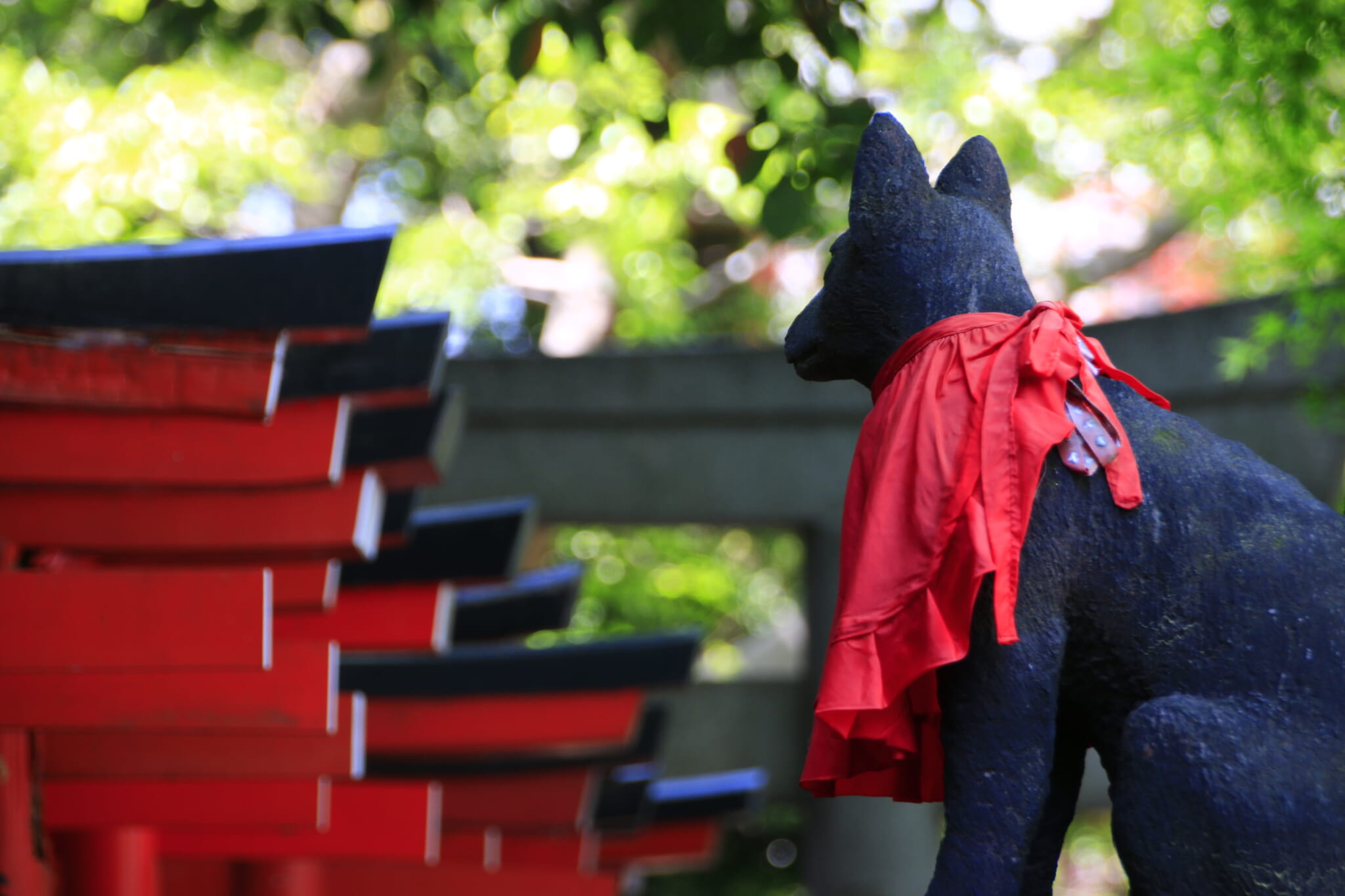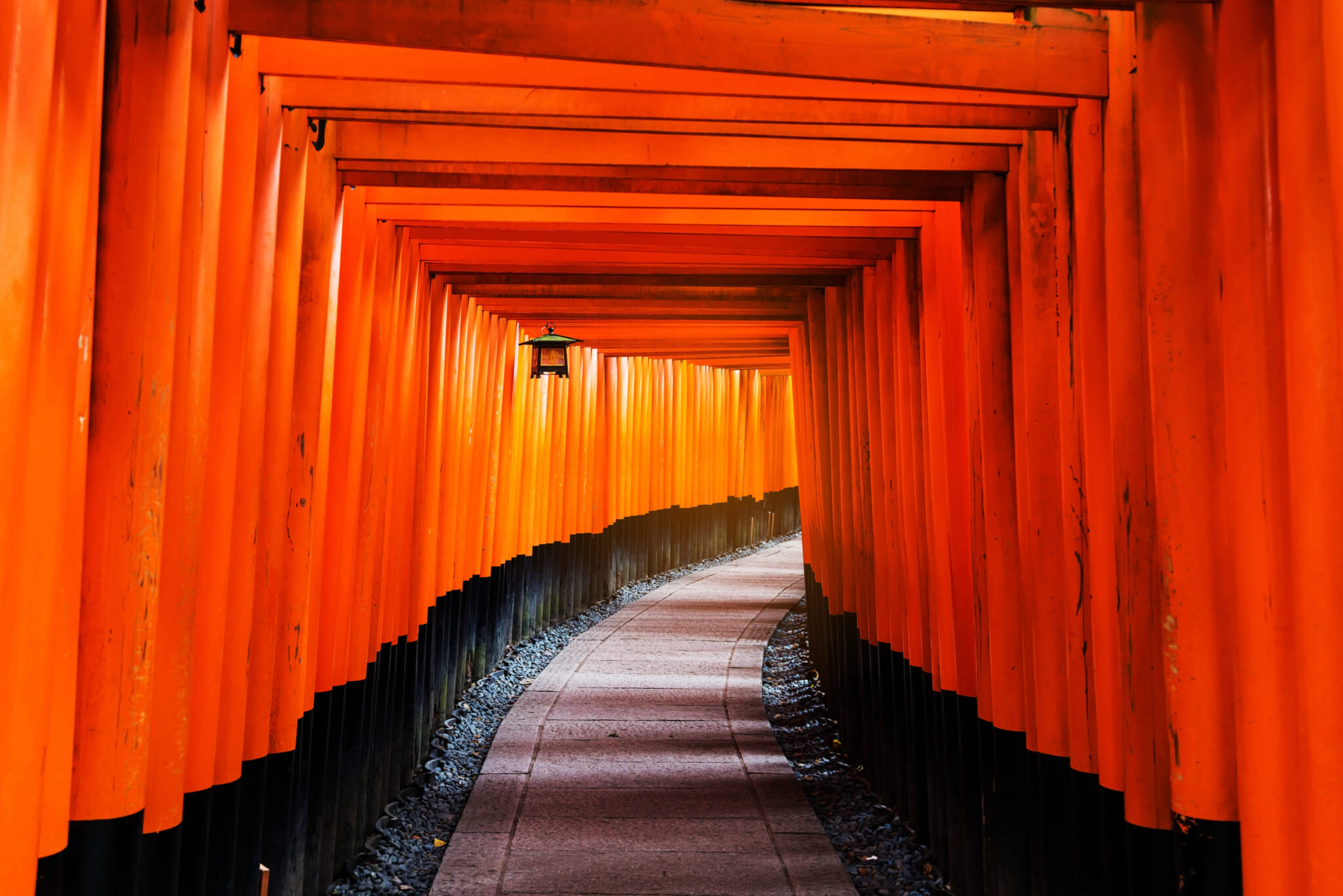
Fushimi Inari Shrine in Kyoto
The head shrine, which spiritually leads over 30,000 shrines around the country, is perhaps most famous for its torii gate tunnel that guides visitors 4 kilometers to the summit. There are over 10,000 torii gates, with travelers coming from all four corners of the world to take photos of them.
Visiting Fushimi Inari Shrine is a must, and the hike up is worth it for the view, but it’s understandable that you might prefer to avoid crowds and still visit beautiful shrines when in Japan. Below are five alternative shrines around the country that will scratch the itch as well as provide off-the-beaten-path travel ideas.
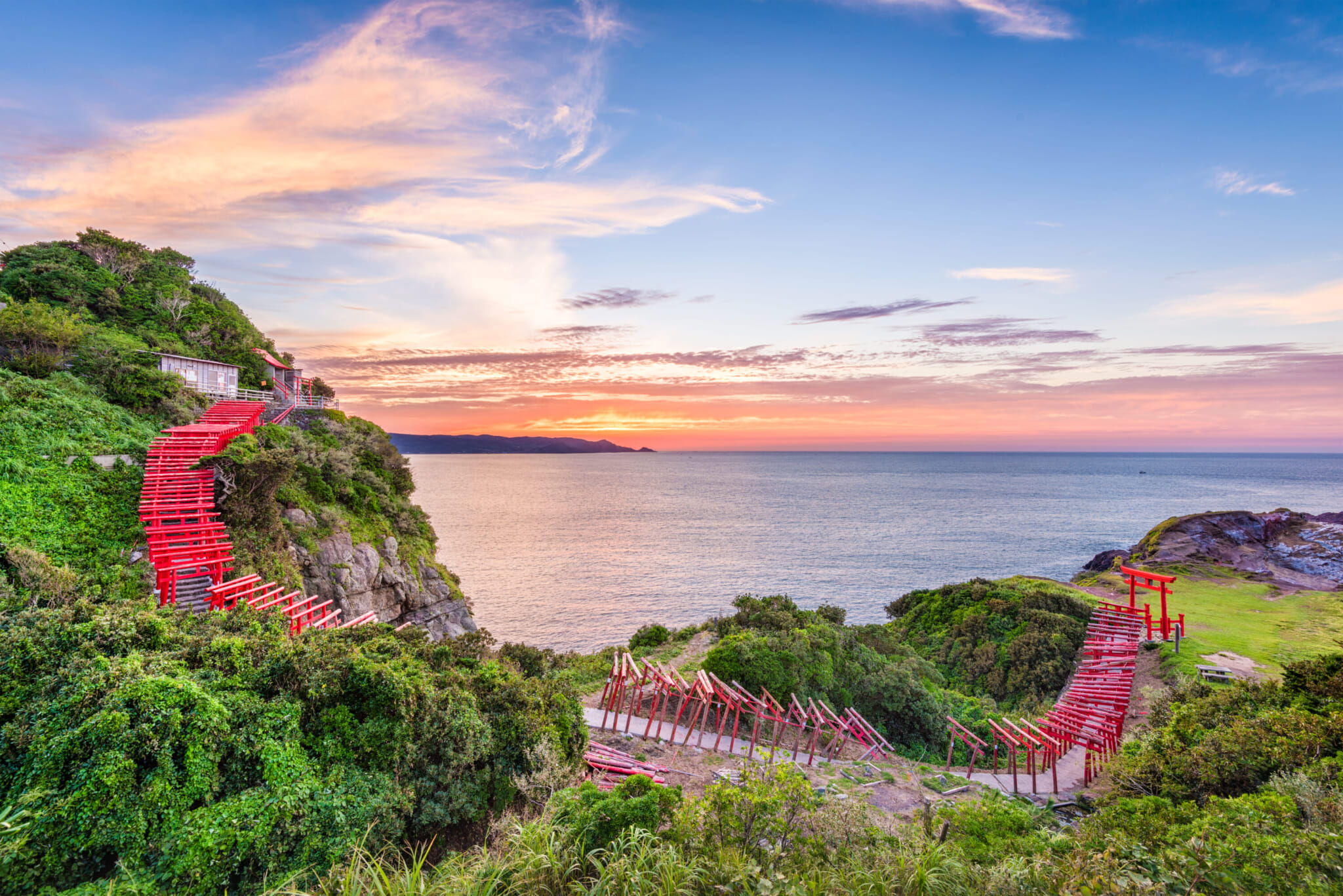
Motonosumi Shrine in Yamaguchi Prefecture
Motonosumi Shrine
Located along the coast of Yamaguchi Prefecture’s Nagato city, Motonosumi Shrine’s impressiveness might just be on par with Fushimi Inari Shrine. A row of 123 torii gates guides visitors through a grassy field and to the shore of the Sea of Japan. The unique location of this shrine is what earned it its spot in CNN’s list of the 36 Most Beautiful Places in Japan.
Legend has it that Motonosumi Shrine was established after a local resident spotted a white fox at his bedside. Foxes are known messengers of the gods in Shintoism. The resident then built a shrine soon after to appease the gods.
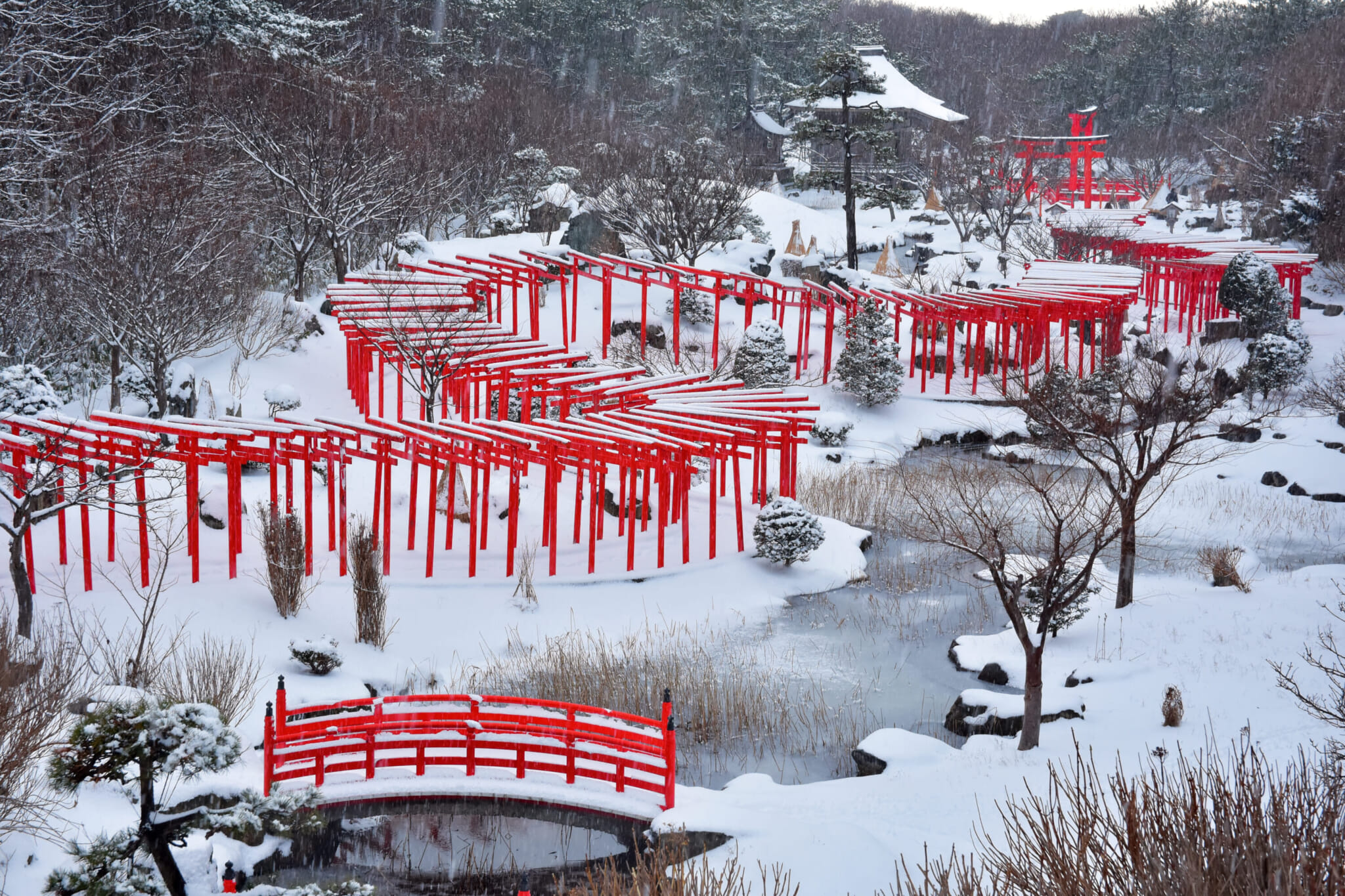
Takayama Inari Shrine in Tsugaru, Aomori Prefecture in the winter
Takayama Inari Shrine
Up in Tohoku, Takayama Inari Shrine offers a spectacular view in the winter, when its torii gate tunnel is covered by a blanket of snow. Visiting in the summer, though, is just as rewarding, as the path winds around small Japanese gardens leading up to the site’s main structure. There are around 200 Torii gates that make up the tunnel. They were donated by followers.
Takayama Inari Shrine is located in Tsugaru, to the west of Aomori city. When in this area, it’s recommended to also check out the prefecture’s top apple growers and cider producers.
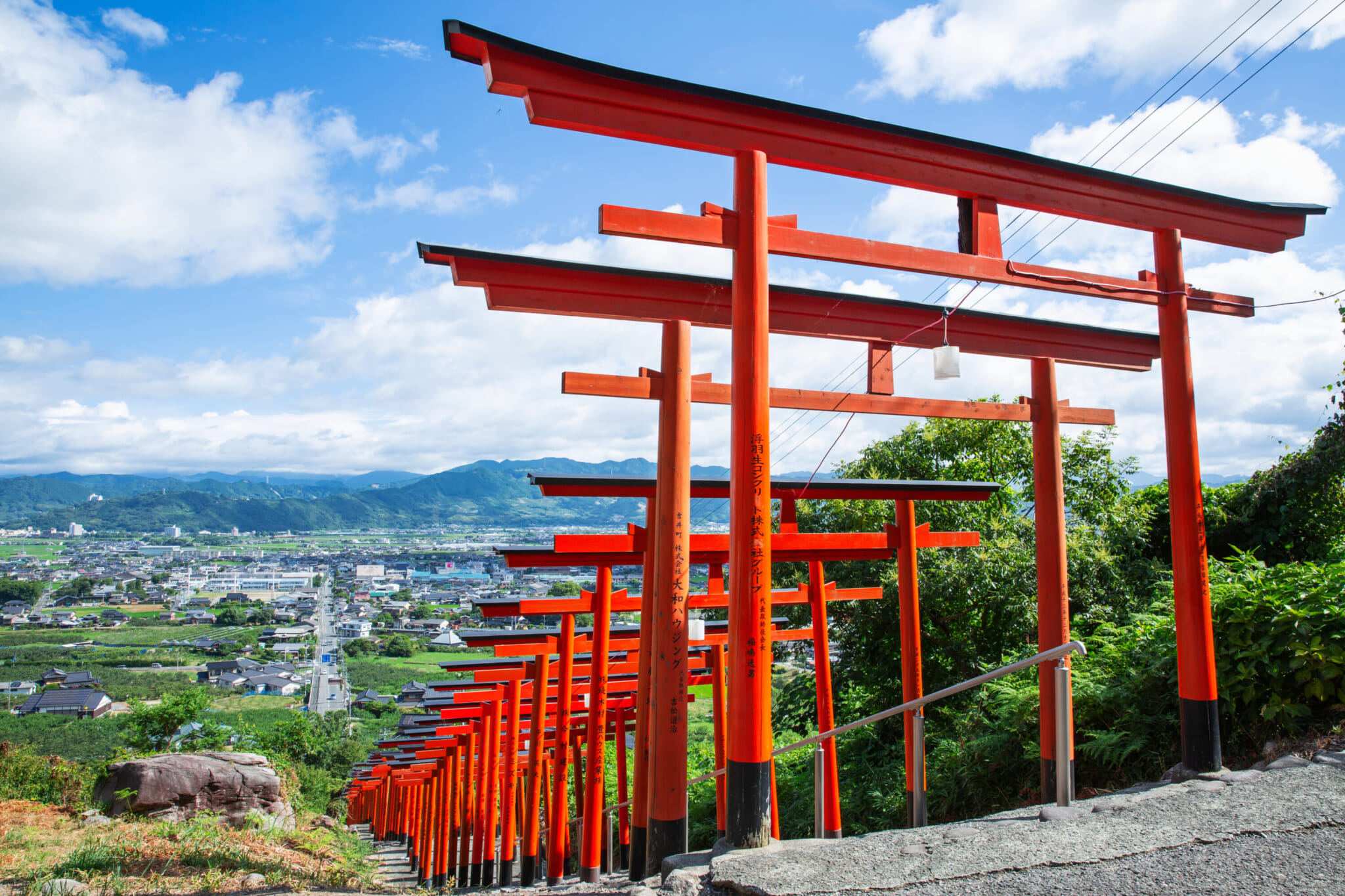
Ukiha Inari Shrine
Another shrine promising great views to visitors prepared to hike all the way up is Ukiha Inari Shrine in Fukuoka Prefecture. The road to the shrine is marked by nearly 100 torii gates that go up some 300 steps into the mountain. Visit in the warmer months for great views of the villages and towns in the distance, but if the chance arises, book a trip in the spring, as Ukiha Inari Shrine is also a great spot for cherry blossom viewing.
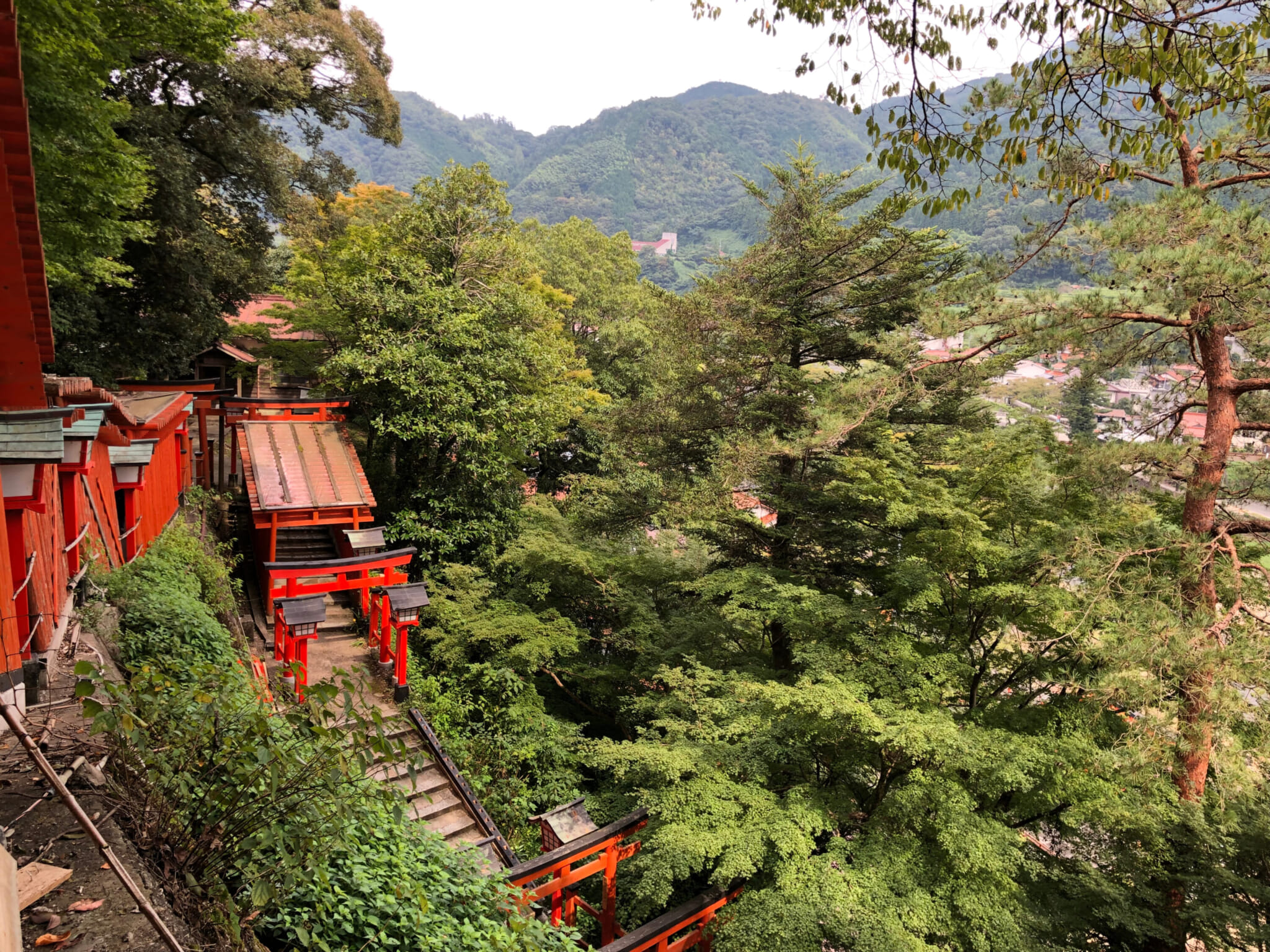
The view climbing up Taikodani Inari Shrine in Shimane Prefecture
Taikodani Inari Shrine
This shrine figures among the five most important in Japan and is located in Shimane Prefecture. Though the approach to Taikodani Inari Shrine is only 15 minutes on foot (maybe 20 at a leisurely pace), it’s paved with more than 1,000 shrines, making it a very close experience to Fushimi Inari Shrine.
Taikodani Inari Shrine was built facing Tsuwano Castle (now Tsuwano Castle Ruins) to pay for the protection of the land. The shrine was closed to visitors until 1871, but it quickly rose in popularity after it was opened to the public. To this day, it is the second most popular Inari shrine to visit for foreign travelers.
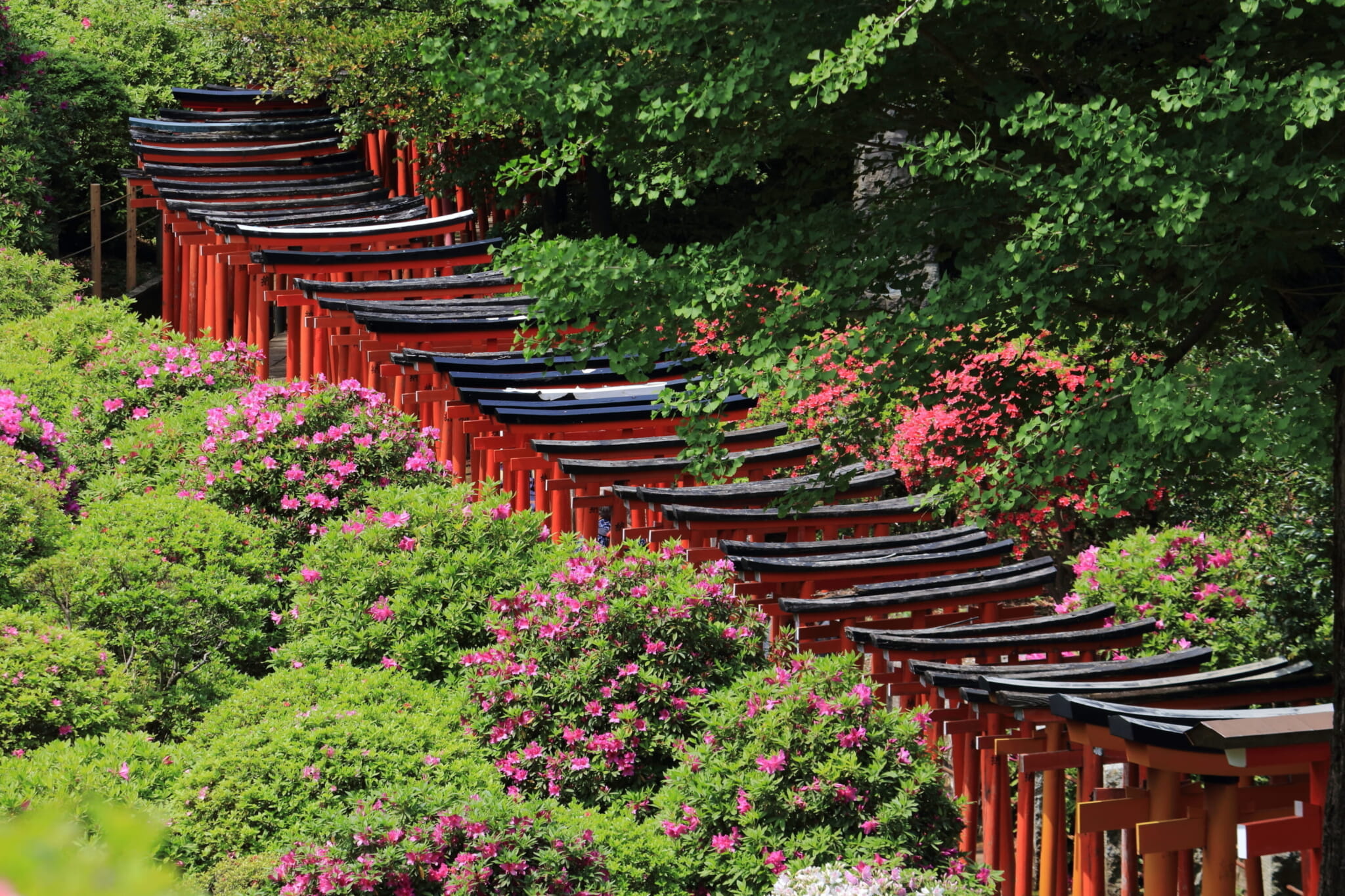
Nezu Shrine in Tokyo
Nezu Shrine
Tokyo’s Nezu Shrine, located in Bunkyo ward, is a well-known alternative to Kyoto’s Fushimi Inari Shrine and is sometimes considered an underrated destination in the capital. Established in the early 18th century, it’s famous for its yearly azalea festival, held in spring,
The shrine’s main building is modeled after Nikko’s Toshogu Shrine. The approach is said to be lined with some 200 torii gates and, at the halfway point, visitors can stop to look down at a koi pond.
More Guides to Shrines and Temples Around Japan
No trip to Japan is complete without visiting some shrines and temples. There is no right way to pick which ones to include in your itinerary, but here are some guides to help in your planning:

